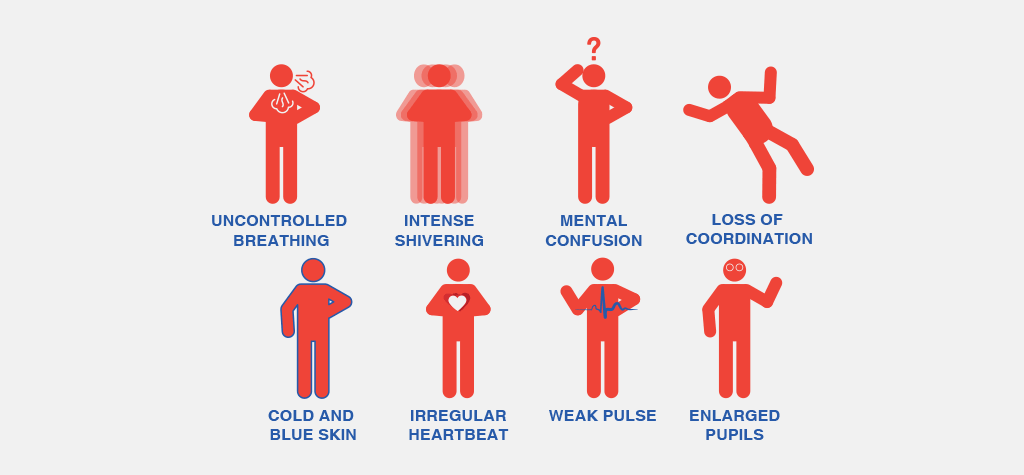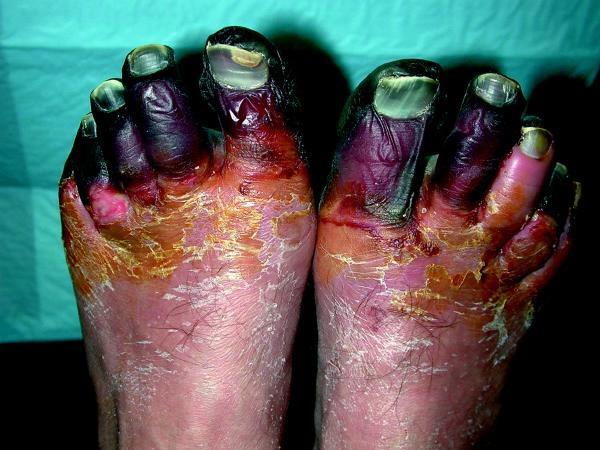What Is Cold Stress? Workforce Symptoms And How To Avoid It.
Anyone working in a cold environment is at risk of cold stress. In several industries, employers require workers to work outdoors in cold environments for extended periods of time, and spending too much time in the cold can have fatal consequences.
Cold stress is just the beginning of the issues that could follow, but it is preventable if workers are taking the relevant steps in protecting themselves when working out in cold temperatures.
But cold stress is not just an outdoor health and safety risk - workers in cold stores, refridgerated warehouses, even supermarket workers in the fridge aisle can suffer from stresses caused by the cold.
However, not everyone is aware of the condition, so what is cold stress?
- Page Contents
- What is cold stress
- How to spot cold stress
- Who is at risk
- How to avoid cold stress at work
- Protective clothing to avoid cold stress
When workers get used to cold conditions, they might struggle to recognise when they are close to this condition. They might already have it and remain unaware of the potential consequences.
It is important to be aware of the changes in your body, and the relevant steps you should take if somebody is at risk.
We will examine the condition, its symptoms, the individuals at the highest risk, available treatments for those already suffering, and strategies for preventing it initially.
What is Cold Stress?
Cold stress is a serious condition that occurs when the body can no longer maintain its normal temperature. The results can be serious. People that work in cold environments may develop other cold-related illnesses and injuries resulting in permanent tissue damage, or even death.
Work conditions with low temperatures (below 10℃/50℉), high wind speed (over 40MPH), humidity, contact with cold surfaces or water, and inadequate clothing define cold environments.
When someone is working in a cold environment, the conditions force the body to work much harder to maintain its temperature as the cold atmosphere draws heat from the body. While it is clear that working in below freezing temperatures combined with inadequate clothing puts you at risk, it is easy to overlook all the factors mentioned above that can increase your risk.
Even moderate temperatures, when combined with factors such as working in the rain with high wind speed, can still cause serious harm.
What's the worst that can happen?
It is important to understand that cold stress is not the final condition from working in a cold environment for a lengthy period of time. It leads to much more serious conditions such as hypothermia and frostbite.
Hypothermia
Hypothermia results when the body temperature drops too low. If this occurs, then there would be numerous symptoms to look out for.
These include:
- Fatigue
- Excessive shivering
- Loss of coordination
- Feeling confused or disoriented

In the later stages, if the symptoms persist and the affected person does not receive prompt treatment, their skin could turn blue, pupils will dilate, pulse will slow down, they may lose consciousness, experience slower breathing, and eventually enter a coma.
Frostbite
At the more extreme end of the spectrum, frostbite can occur.
Frostbite occurs when the skin reaches minus one degrees Centigrade and the body reduces blood flow to the hands and feet to maintain its core temperature. In most cases, workers get frostbite from handling frozen foods, metal, or when they are in cold and wet conditions.
It often affects the nose, ears, fingers, and toes, with symptoms gradually worsening the longer the person is exposed to the condition. In the most severe cases, body tissue sustains such severe damage that amputation becomes the only solution.
The symptoms to look out for include early warning signs of:
- Pins and needles
- Numbness
- Cold, white skin which can turn blue and blotchy when the condition develops.
- The affected areas may begin to ache and thick black scabs begin to form on the skin as it thaws.

Prevention of these conditions is possible if symptoms are detected early or if measures are implemented to ensure the safety of workers when they must work in cold conditions.
Who is at risk?
The fact is, anyone working in a cold environment may be at risk, especially those that are working outdoors for extended periods. For example, snow and ice clean up crews will be out in the early hours to clear up the roads to make them safe for the public.
Sanitation workers are at risk because they will be out in a cold environment for an extended period of time.
Police officers and emergency services such as firefighters and emergency medical technicians will be working in the cold when responding to emergencies.
Construction workers might be spending a long time working in cold, wet or windy conditions. Working with metal as part of their job increases their risk of developing cold-induced conditions, especially if the worker is standing on, carrying or sitting on metal. Metal transfers heat away from the body quickly making these types of work environments much riskier.
However, certain individuals can be more prone to suffer from the condition than others because they might have a pre-existing condition, such as diabetes, hypertension or a cardiovascular disease.
Those on certain medications are also more likely to suffer and are advised to consult with their doctor, nurse, or pharmacy to determine if any medications they take might affect their ability to work in cold environments. While being older or in poor physical condition with an unbalanced diet also puts you at a much greater risk.
How do you avoid cold stress at work?
Luckily, there are measures you can take to protect yourself and your workers from developing the condition, and how to stay safe when working outdoors in a cold environment with high speed winds.
Working practices should be put into place for everyone on site to avoid cold stress risks. Everyone should frequently drinks warm liquids, but avoid caffeine (and alcohol) as it is easy to become dehydrated in cold weather.
Take the work schedule into account. Whenever possible, schedule heavy work during the warmer parts of the day. Enforce regular breaks in the heat to ensure that everyone has periods throughout the day in warm, dry shelters, allowing the body to warm up.
Implementing a buddy system is beneficial, as it allows two workers to keep an eye on each other and watch for symptoms. Regular training should also be enforced so workers have knowledge about cold-induced injuries and illnesses. Victims of hypothermia, for example, may not be able to recognise their own symptoms.
Protective Clothing for Cold Stresses
Wearing protective clothing is the most important way to stay safe. The type of fabric also makes a big difference. For example, cotton loses its insulation when it becomes wet whereas wool retains its insulative qualities even when wet, so the following are recommendations of what to wear when working in cold environments:
Wear at least three layers of clothing:-
- Wear an outer layer to break the wind and allow some ventilation.
- A middle layer of wool or fleece to absorb sweat and provide insulation, even when it gets wet.
- An inner layer of synthetic weave to allow ventilation.
It is important to wear a hat and head coverings too, as up to 40% of body heat is lost when the head is left exposed, especially in a cold environment.
Wear insulated boots that are sized appropriately, as tight-fitted footwear restricts blood flow, while too many socks can also do the same. Instead, pick a pair of thermally insulated socks instead as it will keep your feet warm and not lose its insulation either.
Wear warm, insulated gloves in cold working conditions as well, and make sure they are sized appropriately, especially when contacting metallic surfaces and tool handles.
If you do get hot while working, you can unzip your jacket but make sure you keep your hat and gloves on. The fact that you would be wearing three layers of clothing means unzipping your jacket will not affect you. Ensure all clothing is appropriately fitted and not too tight, as this can restrict blood flow. Loose clothing allows for better ventilation.
Having a change of dry clothing available is also beneficial, just in case the clothes you are working in become wet.
Are you PPE compliant for your outdoor workers?
- 6 Visual Cues That Shape Workplace Culture - 23rd September 2025
- How to Roll Out a Workplace Uniform Policy - 23rd September 2025
- What Makes Workwear ‘Good’? How to Choose Work Clothing That’s Actually Built for Work - 13th August 2025






